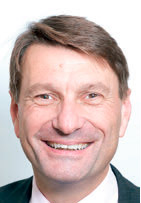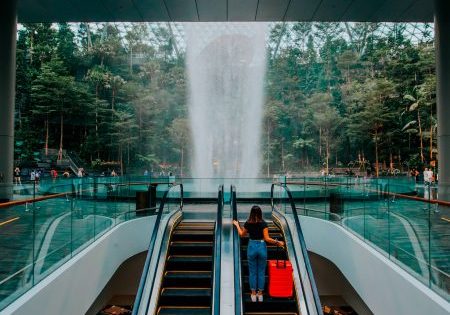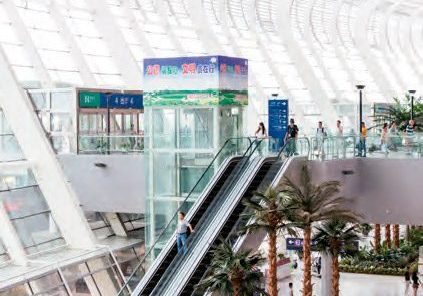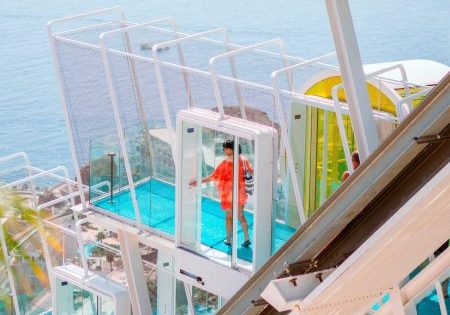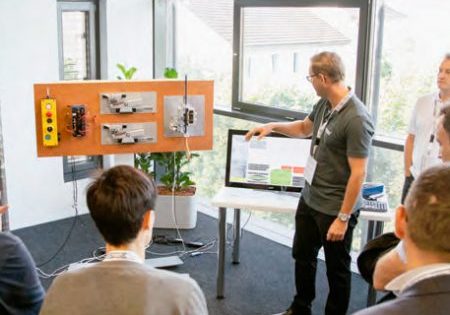One Community
Dec 1, 2019

International experts take in the 10th Symposium on Lift & Escalator Technologies.
by Nick Mellor
The 10th Symposium on Lift and Escalator Technologies, held on September 18-19 at Highgate House in Northampton, U.K., offered a fascinating blend of papers dealing with innovation, design, simulation, education and training, standards and safety presented along with case studies and topical subjects. The audience of 120 came from a wide range of countries, organizations, disciplines and interests, but gathered as one community for the event’s duration. As ever, it was a pleasure and privilege to attend.
Professor Stefan Kaczmarczyk of the University of Northampton opened proceedings by welcoming everyone, especially those attending and speaking for the first time. Your author, chairing the first session, underlined the value for the symposium community to gather and exchange ideas, both through the formal proceedings and in informal discussions.
The opening session dealt with two types of products covered by the European Machinery Directive. David Cooper gave insight into conformity issues with accessible-goods-only lifts, especially regarding those not fitted with safety gears. Concerns in this area were raised by the Lift and Escalator Industry Association (LEIA) in a Technical Warning Notice, which can be found on LEIA’s website (www.leia.co.uk). Michael Bottomley followed this with an overview of the many other types of lifting appliances covered by the Machinery Directive and raised concerns about whether the Machinery Directive provided an equivalent level of safety as the Lifts Directive.
With publication of ISO 8100-32 for the planning and selection of passenger lifts (revising ISO 4190-6) expected soon, Marja-Liisa Siikonen (who spoke during the Standards and Safety Session on day 2), described the basis for selection of lifts in the draft standard: traditional round- trip-time calculations, selection charts and the use of simulation. The incorporation of simulation methods into the draft standard has evidently prompted plenty of debate, which was informed by papers from the session on traffic and simulation chaired by Adam Scott.
Janne Sorsa gave an overview of the use of both traditional calculation and simulation methods, with wide agreement that a calculation should always be a first step of vertical-transportation (VT) design. For more complex situations, however, simulation can provide a more sophisticated design tool. Dr. Gina Barney’s paper raised the question of whether results from simulation can be verifiable, transparent, repeatable and reproducible, highlighting challenges to incorporating simulation into a standard. The results she presented suggested that simulation has some shortcomings in repeatability and reproducibility. The session was rounded out by an illuminating and entertaining paper from Dr. Lutfi Al-Sharif on the use of Monte Carlo simulation for compiling car-load and drive-motor loading data.
A number of papers in different sessions focused on connectivity issues. Anna Peters looked at the logging and analysis of lift journeys using accelerometers, which are becoming increasingly low cost and so readily retrofitted to existing lifts. In a session chaired by Len Halsey, Fabio Liberali presented the possibilities for mirrors incorporated with large lift car displays connected to the Internet of Things (IoT) to provide an almost limitless display of images or information, as well as the possibilities of a touchscreen for controls. Dr. Richard Peters gave a paper describing a lift and escalator management system that could provide a standard interface for acquiring data from existing installations and address many of the limitations preventing the widespread adoption of monitoring.
Dr. Rory Smith highlighted the development of Chinese GB/T 24476 Specification for Internet of Things for Lifts, Escalators and Moving Walks code, which would require all new and modernized lifts and escalators in China to be fitted with remote monitoring using a standard interface defined in the code. The strategic implications of such a development, which were not lost on the audience, would surely challenge the rest of the global industry to respond.
A session on engineering chaired by Barney included two papers that examined rope resonance effects. Kaczmarczyk reported on work examining the use of active and passive control strategies to mitigate the effects of building sway on rope movement. The problem of ropes becoming caught on equipment in the hoistway as a result of building movement, such as from earthquakes, was presented by Suzuko Tamashiro from the Tokyo Denki University. This presentation continued the university’s strong contribution on seismic issues at recent symposiums. The session was completed by Barney presenting a paper from Roland Stawinoga about the use of wood for machine frames and broader sustainability issues raised by the use of timber in buildings.
The symposium dinner at the end of the first day allowed colleagues to continue discussions of shared interests and collaboration, which will surely result in papers at future symposiums.
The second day started with a session on training and education — an area of strong shared interest — chaired by Cooper and marked by the presentation of three exceptional papers. Al-Sharif presented on the benefits of using lift engineering, which relies on various areas of engineering, as a template for an undergraduate final year. He also provided wider insights into the role of the educator and the possibilities of the use of an open educational resource. Next, and complementing this paper, Thomas Ehrl presented on different learning styles and the impact of social media on distance learning. His ongoing research is of great interest, and the results will influence the future development of distance learning. The final paper was given by Tadeusz Popielas of the Polish Lift Association, who offered a fascinating background look into the Polish industry and its response to future skills needs, which were addressed by putting together a vocational training program through secondary technical schools.
Further papers on standards and safety, in a session chaired by Phil Hofer, included Philip Andrew and Kaczmarczyk copresenting a paper on the impact of dynamic effects on the standard traction calculation — in particular, where rope resonances might cause the applied traction ratios to exceed the critical traction ratio. Cooper returned with a paper looking at various cases and causes of escalator runaways. Further discussion highlighted the importance of including escalators in statutory inspection/ thorough examination, including brake testing.
The final session, chaired by Graham Barker, offered four case studies of novel challenges and developments in design and planning and how to address these. Scott highlighted the rise in use of bicycles in cities and the requirements this is placing on VT design. Scott was followed by three people making their symposium debuts (who hopefully will return). Alan Cronin, using London’s “Walkie Talkie” building as a case study, extended the horizontal and vertical journeys holistically in a very informative presentation. John Stopes presented the various challenges faced by the development of a VT strategy for 22 Bishopsgate in London and how the constraints from the previous design were overcome. The session was rounded out by Phil Pearson describing the VT challenges within a new soccer stadium and how access, egress and evacuation needs of various user groups were provided.
In closing, Kaczmarczyk and Richard Peters thanked the speakers, reviewers of papers, the venue and, especially, Elizabeth Evans for once again organizing such an excellent event. The trustees are particularly grateful to the exhibitors for their support.
Participants are looking forward to the 11th Lift and Escalator Symposium in Shanghai on May 4-5, 2020. There has already been a call for papers, and your author encourages more papers on innovation and engineering topics. Those interested in presenting can visit www.liftsymposium.org for more information. This site also provides download access to all papers from this and all preceding symposiums.
The Lift & Escalator Symposium is co-organized by the Chartered Institution of Building Services Engineers (CIBSE) Lifts Group, LEIA and the University of Northampton. The event returns to Northampton for the 12th Symposium on September 23-24, 2020.
The Lift and Escalator Symposium Trust
The Lift and Escalator Symposium (the first of this name and not to be confused with more-recent events) is run by a not-for-profit trust dedicated to improving training and education in our sector. The trustees (David Cooper, Dr. Stefan Kaczmarczyk, Dr. Richard Peters and your author) reflect the strong commitment to education and training by the University of Northampton, Chartered Institution of Building Services Engineers Lifts Group, and the Lift and Escalator Industry Association.
Get more of Elevator World. Sign up for our free e-newsletter.
